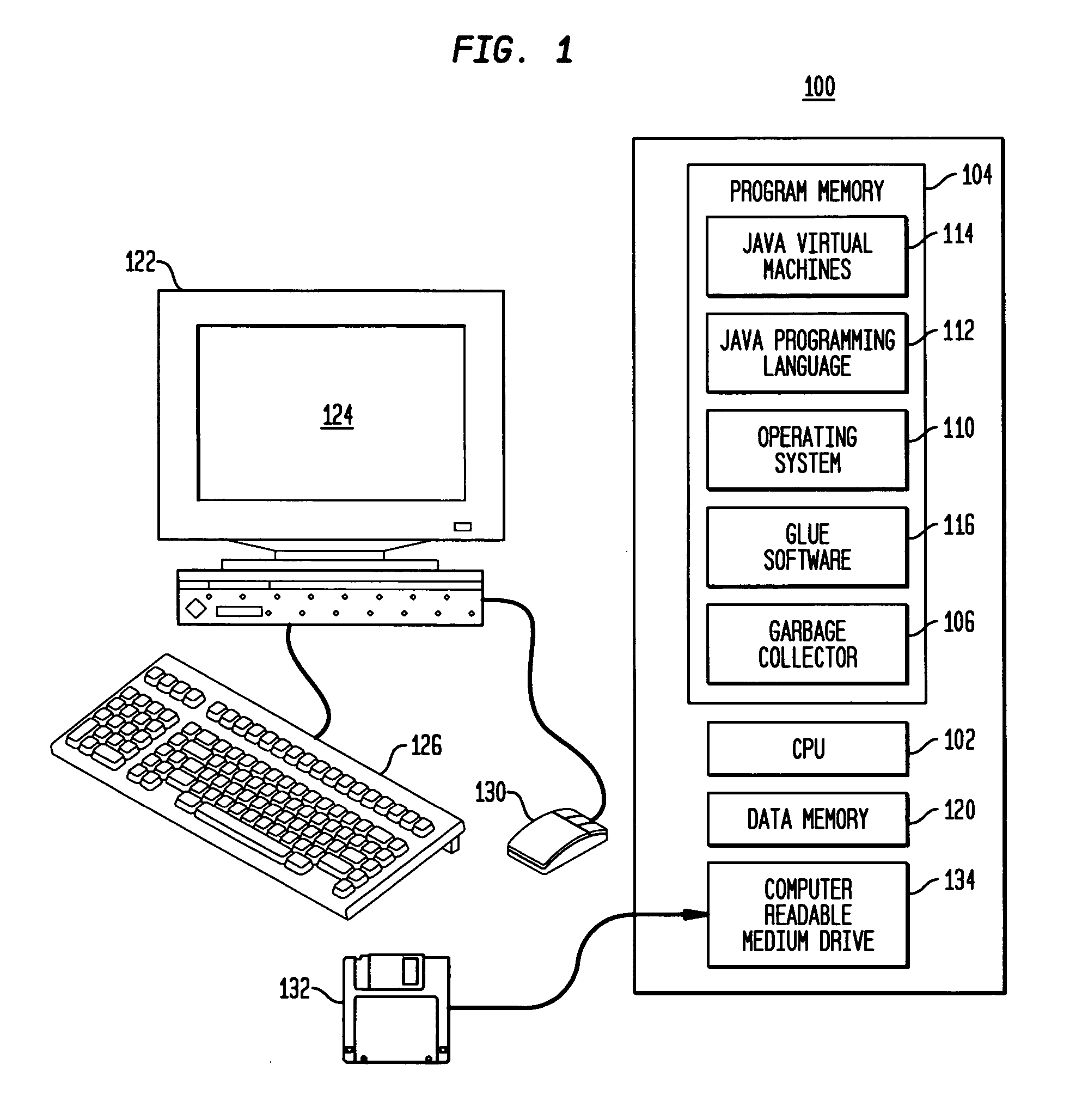Generational real-time garbage collection
a generational and garbage technology, applied in the field of automatic memory management, can solve the problems of not being able to simply spread out the collection more, not being able to meet the hard real-time constraints, and not being able to meet the utilization level of 50% during the collection, so as to improve the effect of real-time garbage collection
- Summary
- Abstract
- Description
- Claims
- Application Information
AI Technical Summary
Benefits of technology
Problems solved by technology
Method used
Image
Examples
Embodiment Construction
[0036]FIGS. 1 and 2 illustrate, as an example, a computer system 100 which may be used in the practice of this invention. This computer system 100, according to the present example, includes a controller / processor 102, which processes instructions, performs calculations, and manages the flow of information through the computer system 100. Additionally, the controller / processor 102 is communicatively coupled with program memory 104. Included within program memory 104 are a garbage collector 106, operating system platform 110, Java Programming Language 112, Java Virtual Machine 114, glue software 116, a memory allocator 202, Java application 204, a compiler 206, and a type profiler 208. It should be noted that while the present invention is demonstrated using the Java Programming Language, it would be obvious to those of ordinary skill in the art, in view of the present discussion, that alternative embodiments of the invention are not limited to a particular computer programming langu...
PUM
 Login to View More
Login to View More Abstract
Description
Claims
Application Information
 Login to View More
Login to View More - R&D
- Intellectual Property
- Life Sciences
- Materials
- Tech Scout
- Unparalleled Data Quality
- Higher Quality Content
- 60% Fewer Hallucinations
Browse by: Latest US Patents, China's latest patents, Technical Efficacy Thesaurus, Application Domain, Technology Topic, Popular Technical Reports.
© 2025 PatSnap. All rights reserved.Legal|Privacy policy|Modern Slavery Act Transparency Statement|Sitemap|About US| Contact US: help@patsnap.com



